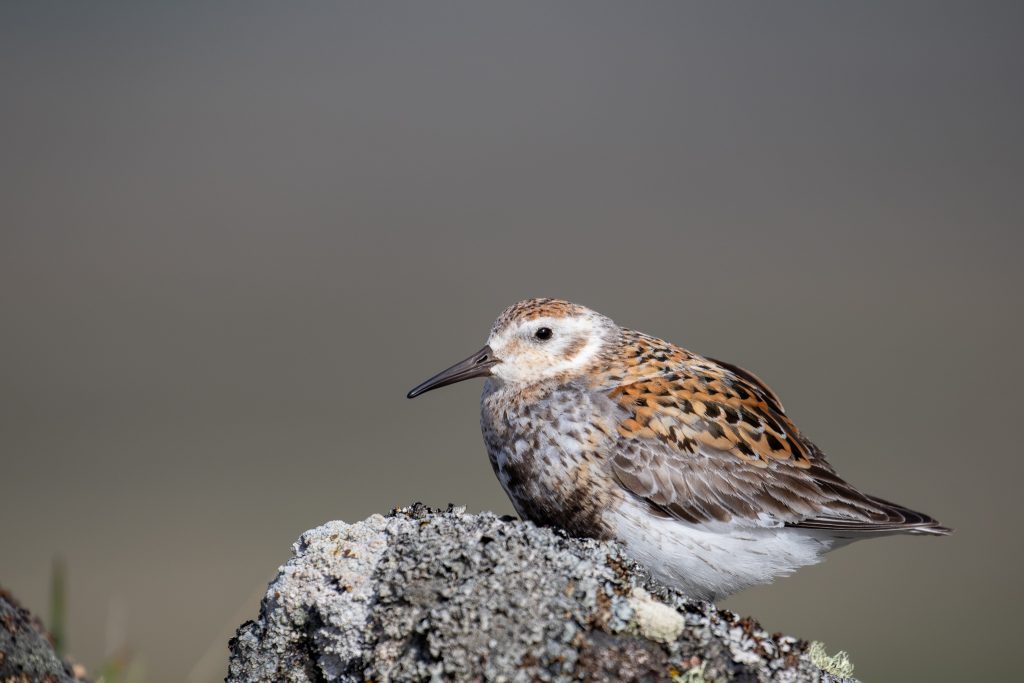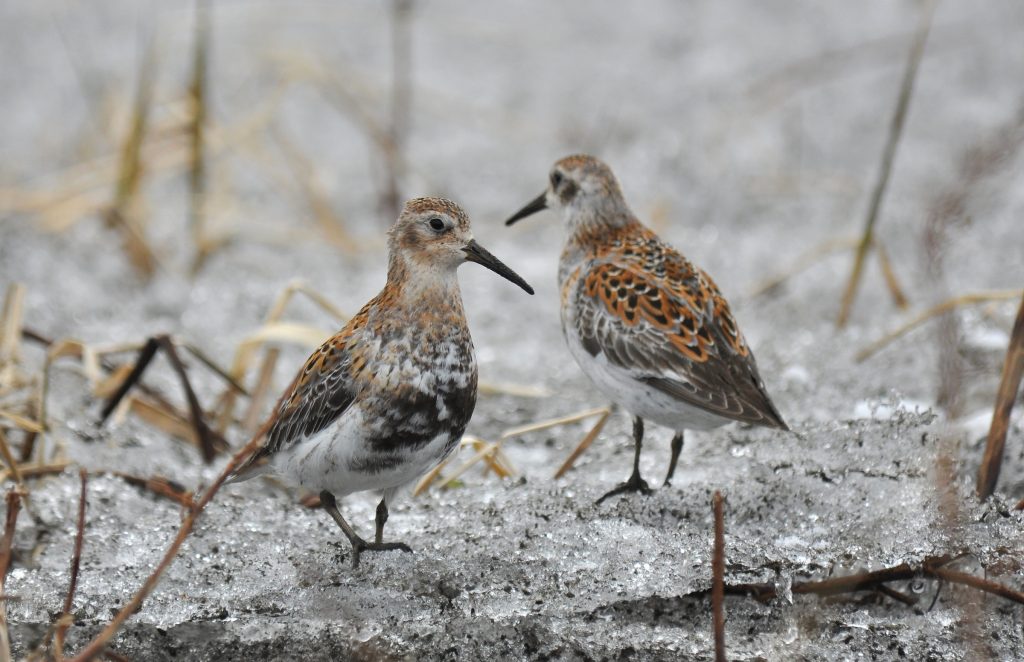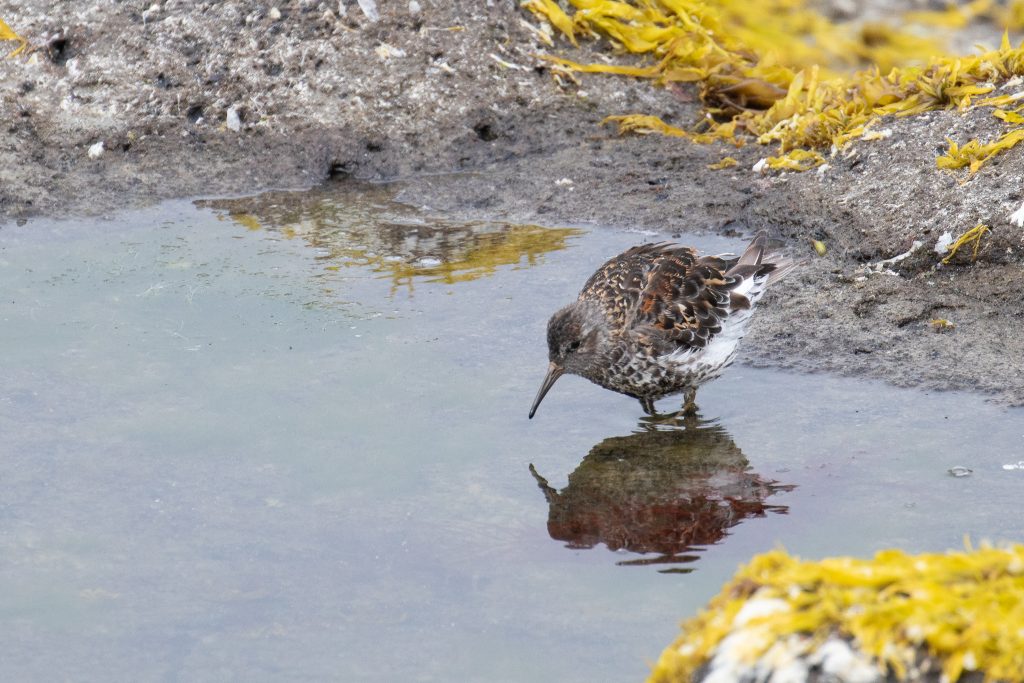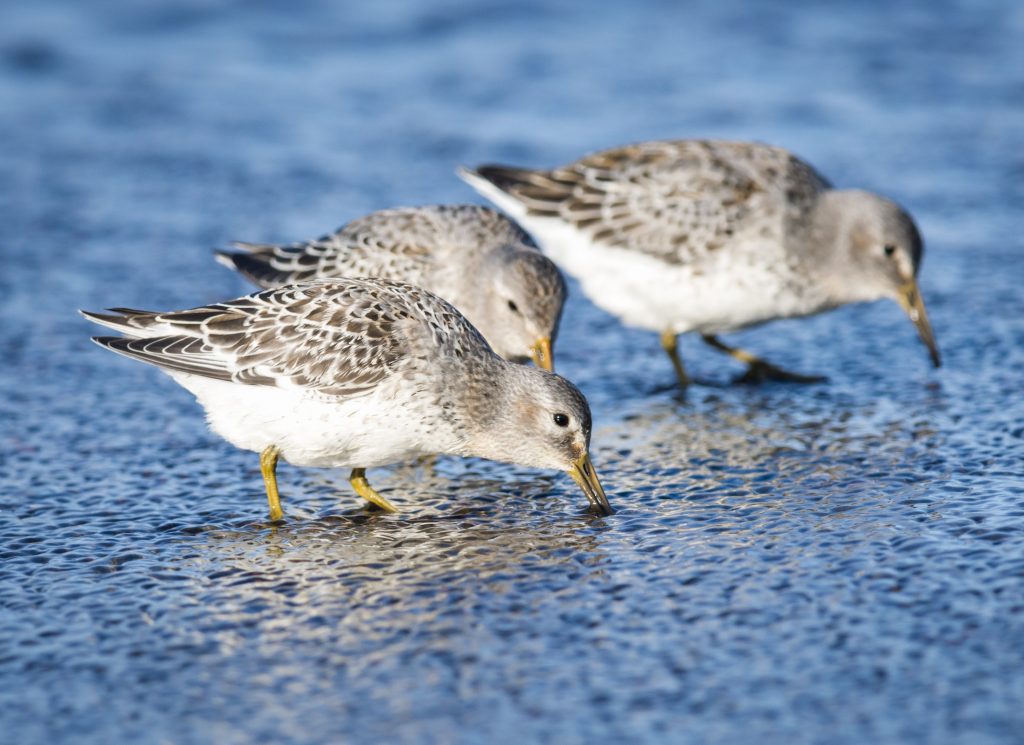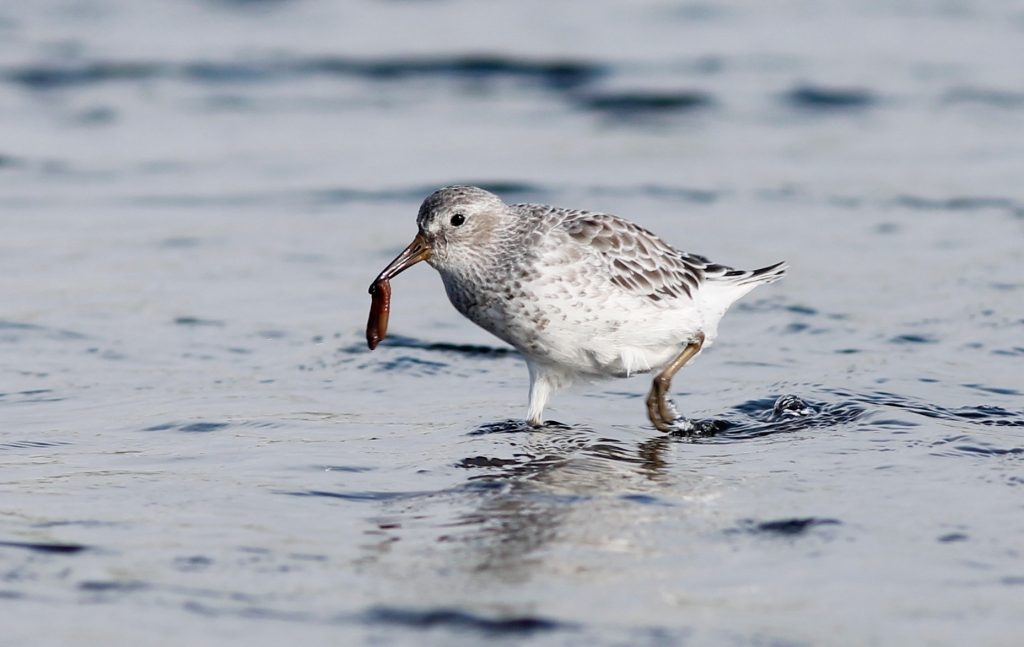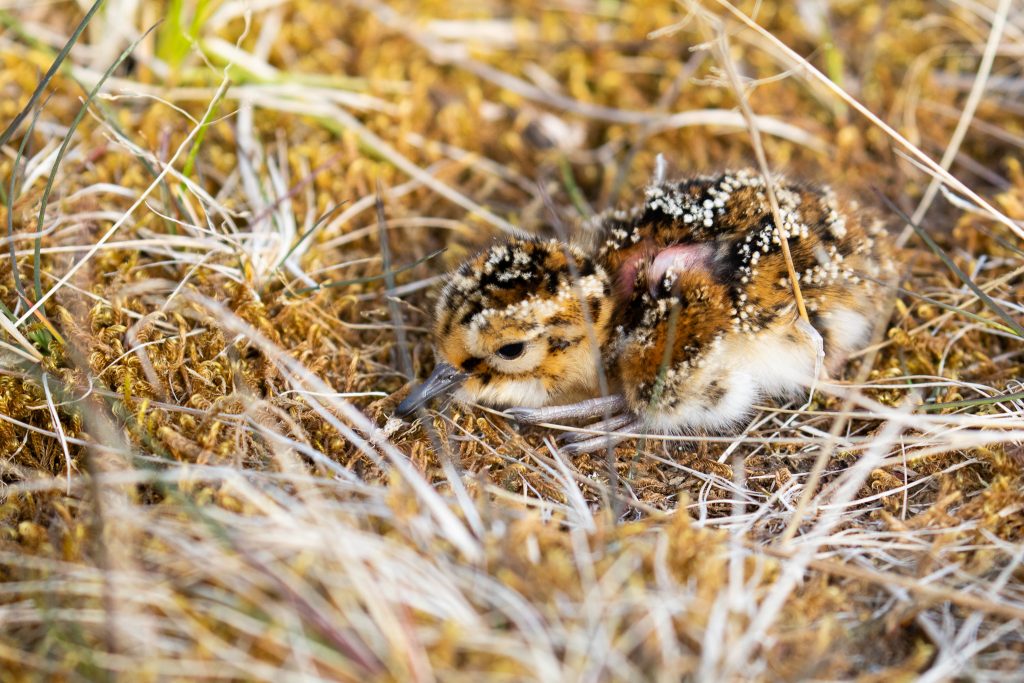The most widespread and common shorebird found in the Pribilof Islands, this species is an abundant nester and passage migrant, which has been found occasionally during the winter. The first spring migrants typically arrive during the second half of April (though exact timing is foggy) with sizeable numbers often present by the beginning of May. Large numbers breed across the upland habitats of the islands with fairly uniform numbers seen throughout the spring and into early summer. Post-breeding birds begin to gather along the island’s coasts by early-mid July with numbers increasing through July into August and peaking from August 15th to September 10th with a combination of local breeders and migrants. Large numbers may still be found through late September and into early October; however, numbers can decline rapidly during this period with typically less than a couple dozen seen per day by October 10th. Individuals are typically present past when birders leave the islands in October and the sporadic early and mid-winter records suggest that this species is a rare winter resident in the Pribilofs.
The locally breeding subspecies (Calidris ptilocnemis ptilocnemis) is a breeding-endemic to the Pribilofs and St. Matthew Island group and was once considered its own species, the Pribilof Sandpiper. The three other subspecies of Rock Sandpiper (couesi, tschuktschorum, and quarta) have all been vouchered from the Pribilofs, though the record of quarta is likely in error. The remaining two non-breeding subspecies (couesi and tschuktschorum) are very rare spring and regular late summer and fall migrants but are not easily distinguished from each other making subspecific identifications difficult.
